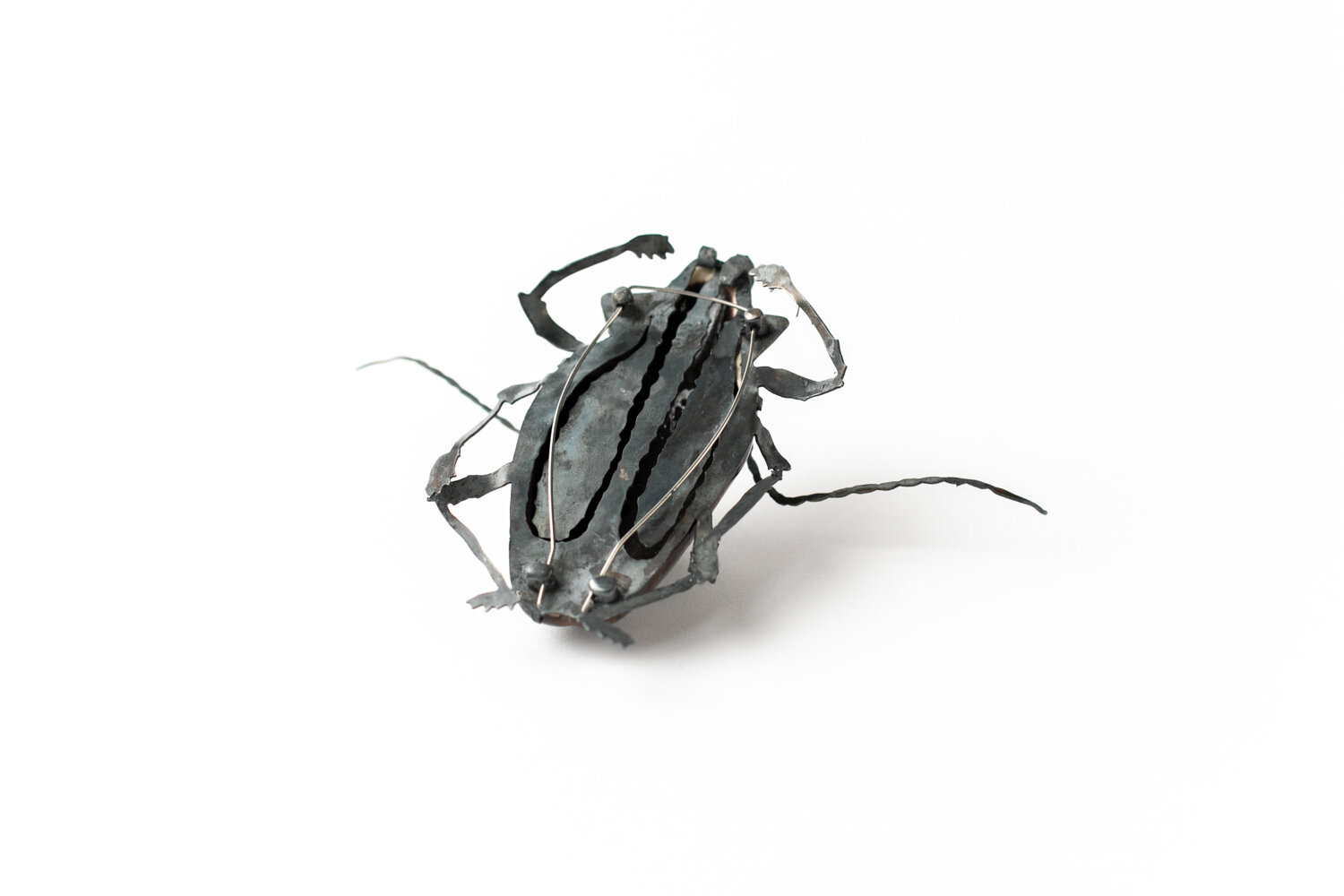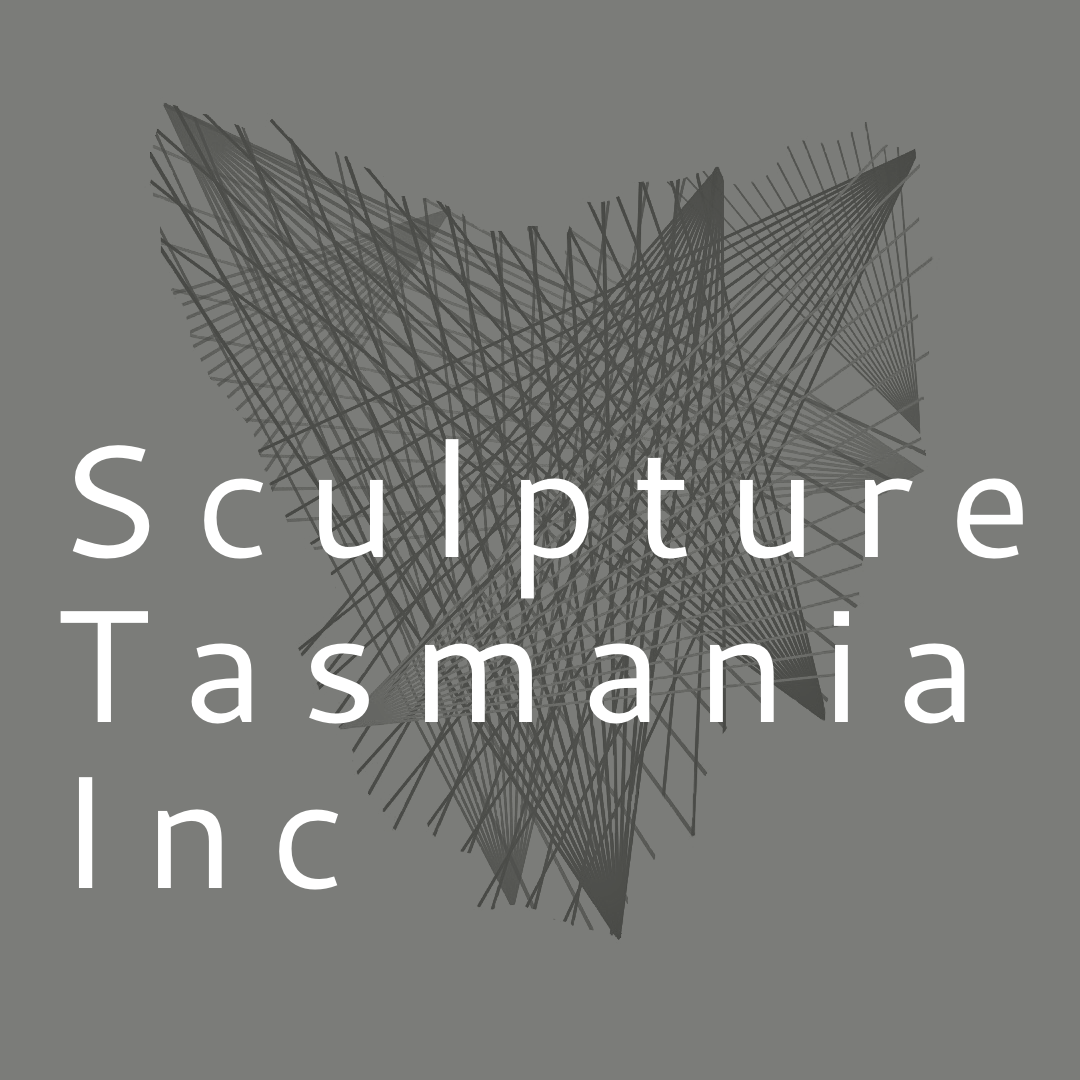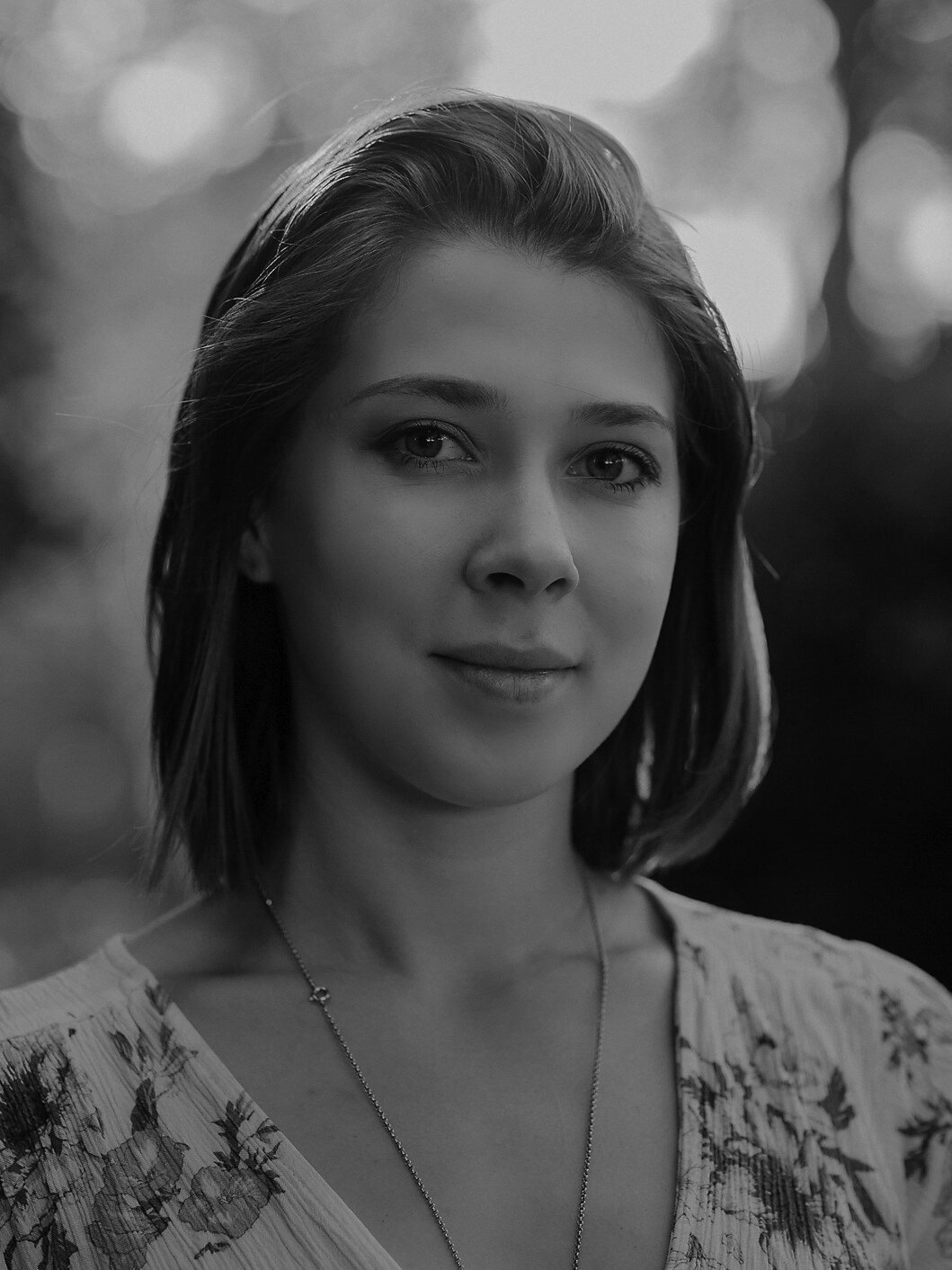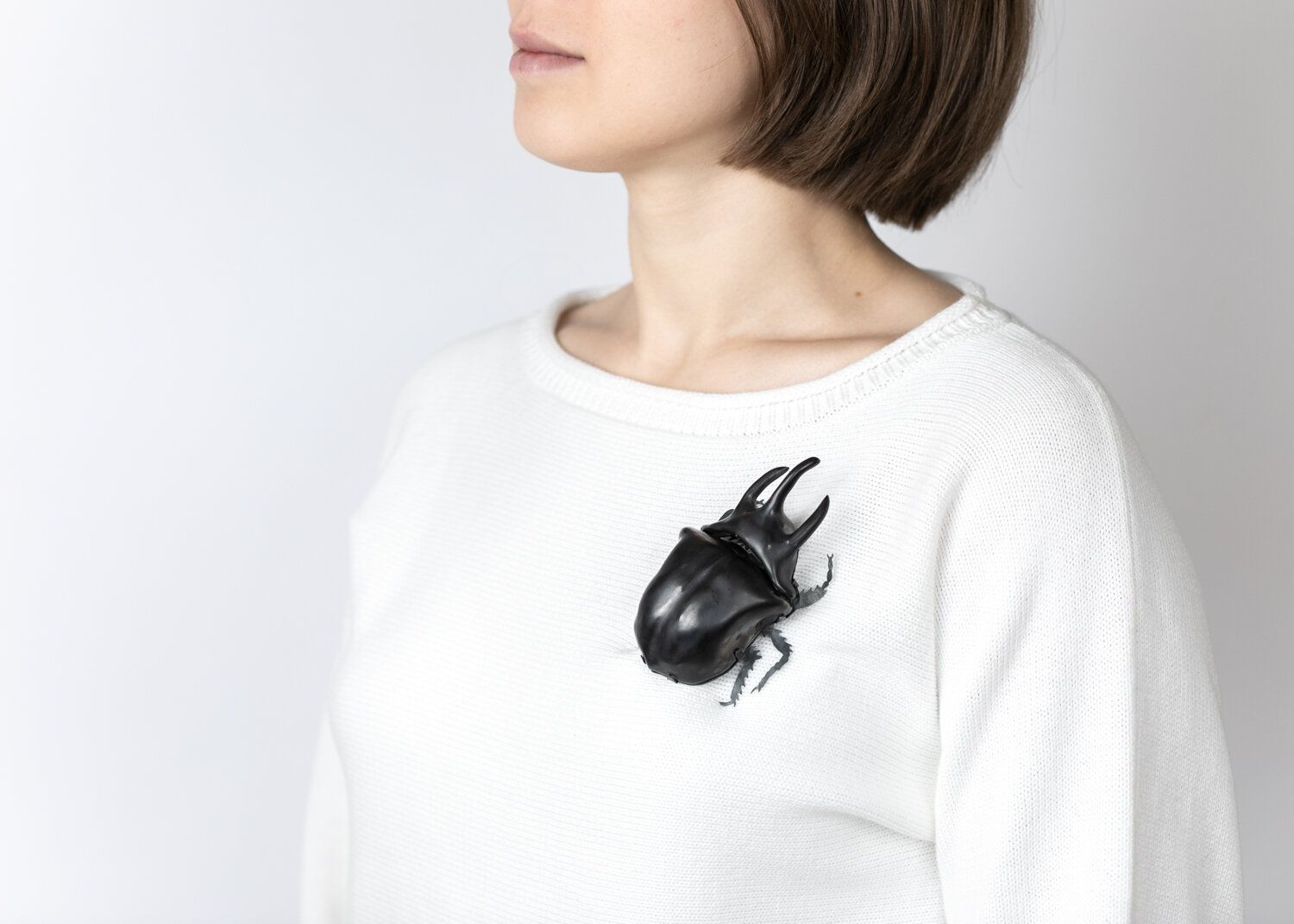
Sam Dennis
I hold a Bachelor of Contemporary Art and Honours from UTas, 2014. The undergrad degree was taught with a strong emphasis on conceptually-led practice, where materialism/output was often to be considered flexible or even secondary (or more rightly, complementary) to the conceptual intent of the artist. It was a challenging environment for someone with a traditionalist view of disciplines within art, and helped shape my current practice in such a way that it is very adaptable.
My introduction to silversmithing and jewellery came about in a 2nd year elective unit which I took ‘just for fun’. In this ‘Intro to Jewellery’ I found a material and methodology that synced with me in a way that felt very natural and enjoyable. I could endlessly experiment and repetitively hone skills in a way that was always a struggle in painting and drawing (which is what I had enrolled to study). Through negotiation I was able to continue to explore the jewellery studio for the remainder of my degree, though it was not formally taught as a department at the time. It has been a steep learning curve without tutored guidance after that one unit, but with the studio and tools at the uni, and later my own, along with resources available online and in books, I gradually became confident in my technical skill and was able to suitably apply it to my ideas.
The ceramic component of my practice became more substantial after university, though I spent time in the department and maintained a good relationship there it had not been a leading material during my studies. One of the most significant experiences was a 3 day intensive workshop with Juz Kitson at the 2014 Australian Ceramics Triennale. This came about by happenstance, as another conference I was hoping to attend was cancelled. The Ceramics Triennale fell at the right time to fill the gap, being a periphery interest to my practice. Juz was a great mentor and despite the short time frame really opened my eyes to approaches to making, confidence and materiality.
“I also value how in sculpture the display can be aligned to, or integral to, the context of the work itself. Whether this be in the gallery, at a specific site, or on the body; the entire presentation should help tell a story or impart some crucial impact.”
Working in 3D I have a lot of options to trial things very quickly, and an ability to move across different materials with relative ease. I prefer to work directly, building up from scratch in sheet metal or clay, but greatly appreciate the ability to cast when needed. As much as I love drawing and painting, I find greater freedom working ‘in the round’ and feel like I have greater control over the way my work can be perceived.
When viewing sculptural work I am fascinated by signs of making, or lack thereof. I enjoy walking around a work and, after enjoying its form or beauty, engage with its mode of manufacture; I want to try to guess the methods used and how it was assembled. That said, I find the greatest pleasure in works where this is not obvious, or even completely absent, yet it is still obvious that this is something that someone made. When that happens I find a great sense of wonder and monumentalism in a piece (regardless of scale, I am more attracted to, and find greater power in, small works) and feel that such works have a greater grounding to nature and the living world despite being completely artificial.
My practice is centred by a fascination with nature and the ways we have historically tried to understand it. Biology and natural history have always been a gateway for me conceptually, and are a clear theme throughout my practice, both in the work I make and the way I display for exhibition. I draw strongly from historical tropes of the museum, taxonomy and the cabinet of curiosities for aesthetic inspiration. Symbiosis and parasitism for example, were an early (and lingering) fascination, which I could conceptually explore, both as a thematic and as a mechanic – prescribing a literal connection between a sculptural object and a garment, which would illustrate a type of relationship or pseudo-function. I enjoy it most when what I am working on can grow a curiosity in the viewer, and prompt them to want to know as much about the subject matter as about the work itself.
“It’s important for me that people want to, and can, explore the work and try to understand it at a physical level, but I also want it to be unclear how it was made or what from, to emphasise the experience of curiosity.”
“I would never call my work or practice participatory nor audience -driven, but there is a level of engagement that I do seek which is, for me, part of the function of the work itself.”
“More recently, my series ‘Coleoptera’ manifested as a collection of imagined, hybrid and hyperbolic beetle specimen made in glazed ceramic and sterling silver.”
At a hands-on/making perspective I was fascinated by the alien beauty of beetles, and aimed to create pieces at the interplay of realism and artifice; not specific to any species or even anatomically correct, instead capturing the distinguishing features or greatest impression of various types of beetles, skewing or exaggerating their morphology within a window of believability. At a broader or more concept-driven level, I used this series to explore the implications of collection, specimen, preciousness and commodity; employing culturally embedded reactions through the context of jewellery to examine repulsion versus desire and invite curiosity where avoidance would normally occur. For my own practice, I wouldn’t be making things like beetles just to be free-standing sculptures, I would find little dialogue besides ‘here look at my beetles’, but by forcing the context of jewellery into the work I actively impose the expectation of preciousness onto our cultural or personal instincts of what is otherwise considered ordinary or undesirable. When worn, the pieces appear to be tentatively perched upon or scuttling across the garment. In the exhibition I display the works as pinned specimens, in reference to museum collections and specimen displays, set as though the draw has been pulled out for review with gloves draped on the side. Viewers are asked to inspect the collection, indulge a natural sense of curiosity and examine the discarded as the precious and experience the ordinary as the extraordinary.
Having a rural upbringing, alongside the ability to go into reserves and parks at easy access has been at an advantage to my interests and my practice. I enjoy living in Tasmania, and am content with the level of isolation it brings, as I’m not one for cities and big crowds. There is also a perceived exoticism or regionality associated with being a Tasmanian artist, which has its own small perks and advantages. With that said it does bring some challenges to my practice as far as accessibility of materials, and to a much lesser extent, exposure of my practice. I spend a lot of time tossing up the best approach to get materials for example, and looking at logistic implications of how much to order or when.
A lesser known aspect of my professional practice is my work in production pottery, which, for the most part, financially underpins my more experimental and exhibition led practice. I think it is very important to have something that grounds your practice and is regular, which I mean both as something you repeatedly make with confidence and a staple piece or series made for income with minimal compromise. For me, this is best separated from my ‘fine art’ practice as I burn out quickly when trying to repeat or produce editions on works that I only imagined making one of. Having the ability to make something functional and tangible using the same facilities and equipment I have accumulated for my art gives me great pleasure, a sense of worth or satisfaction, and can in fact be a relief from other creative projects when they become stuck.
“My interest in Tasmanian natural history, particularity botanical taxonomy, has grown stronger in the last couple of years and I am keen to explore this further to deepen my creative connection with the state and open new localised opportunities.”




Image Credits: Sam Dennis’s Coleoptera series photographed by Mel de Ruyter (www.melaniekate.com.au).





